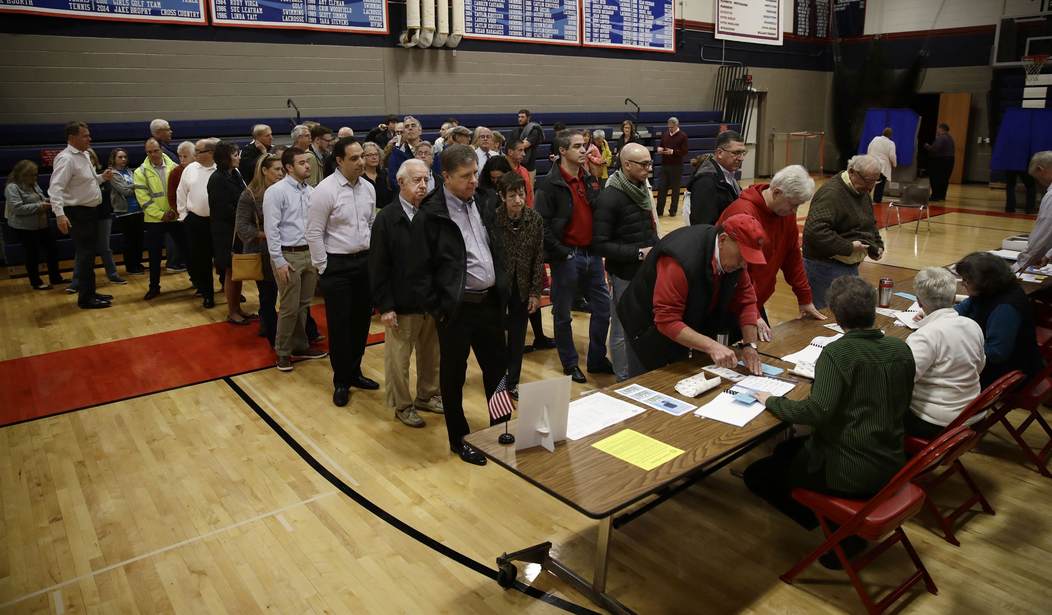DOYLESTOWN, Pennsylvania — There are only a handful of counties in this country that can authentically claim their voting habits are bona fide bellwethers for elections in battleground states. Bucks County, a suburb near Philadelphia, is one of them.
What makes it so is the political diversity of voters that is split up into three distinct geographical patches: Lower Bucks, Central Bucks and Upper Bucks.
Lower Bucks has always been filled with working-class voters, traditional New Deal Democrats and many Catholics who migrated here out of Philadelphia to bedroom communities in the 1950s and stayed along with their children and grandchildren. They are culturally conservative, with many breaking away from the national Democratic Party beginning in the 2010 midterm elections.
Central Bucks are the voters who moved up and out of Lower Bucks as it began to decline as industry did. They generally are upper middle class and a mixture of barely Republican to progressive Democrat, with neither of them caring much for former President Donald Trump. The barely-Republicans don’t like how Trump changed the party, and the latter dislikes, well, everything he stands for.
Then there is Upper Bucks, which is part rural, part suburb and the place where most tourists visit. With stunning rolling farmlands, colonial history and an abundance of covered bridges, it is the part of Bucks County with very little lingering attachment to Philadelphia. Of the three parts of Bucks County, it is the one that is the most truly conservative.
On Tuesday, voters decided to change the balance of power on the Central Bucks School District’s school board, which previously had a 6-3 Republican majority. This week, voters flipped it to a pending 6-3 Democratic majority.
At issue for these voters, known for swinging back and forth between Republicans and Democrats, was the restriction of political advocacy that the Democratic candidates called “harmful policies” against sexual minorities.
The Democrats began plotting their messaging and raising money two years ago after the board passed “Policy 321,” which details that employees should not advocate to students on “partisan, political, or social policy matters.” They are also not to display any “flag, banner, poster, sign, sticker, pin, button, insignia, paraphernalia, photograph, or other similar material that advocates concerning any partisan, political, or social policy issue.”
Democrat Rick Haring, who defeated Republican candidate Aarati P. Martino in Region 6, ran on reinstating “compassion and common sense” after the school board passed a policy last January that bans teachers from “advocacy activities” that he and the other Democrats who ran and won said would marginalize LGBT students.
Apparently, a majority of voters rebelled against the involvement of the national Moms for Liberty, portrayed by the media as extreme, and which was thought by many centrist voters, even those who usually lean Republican, to use rhetoric that was a bridge too far.
Bucks County voters are telling Republicans to stop with the overreach. They are also telling the Democrats, “We didn’t exactly vote for you as much as we voted against the Republicans.”
If Democrats remember why voters placed them on the school board and hold to that promise, then Republican candidates running in Bucks County are wise to look at why the other team has power and they do not. If not, they will lose in this county as well, which could cost the Republicans the White House and the majority in the House and Senate.
Salena Zito is a CNN political analyst, and a staff reporter and columnist for the Washington Examiner. She reaches the Everyman and Everywoman through shoe-leather journalism, traveling from Main Street to the beltway and all places in between. To find out more about Salena and read her past columns, please visit the Creators Syndicate webpage at www.creators.com.








Join the conversation as a VIP Member